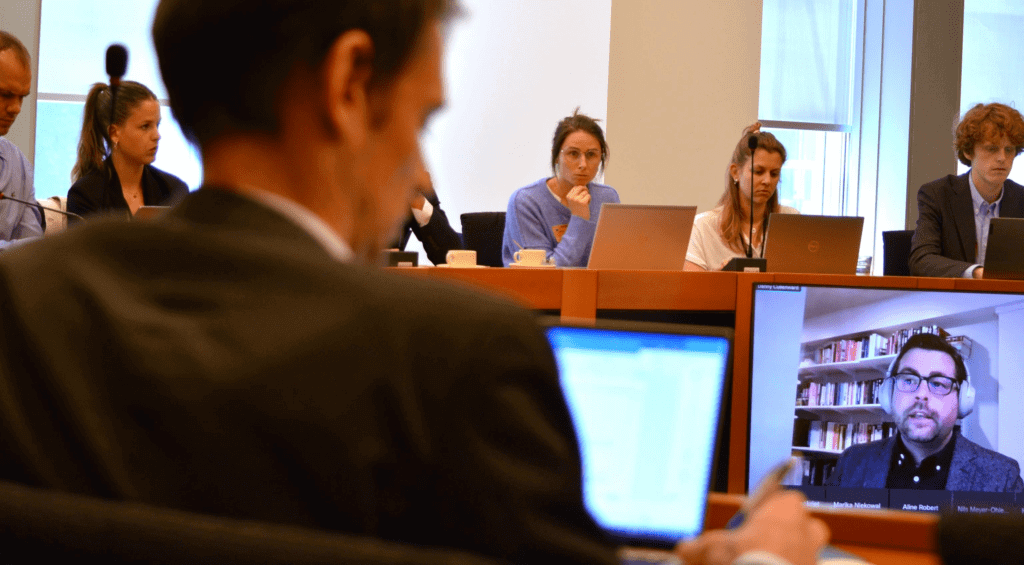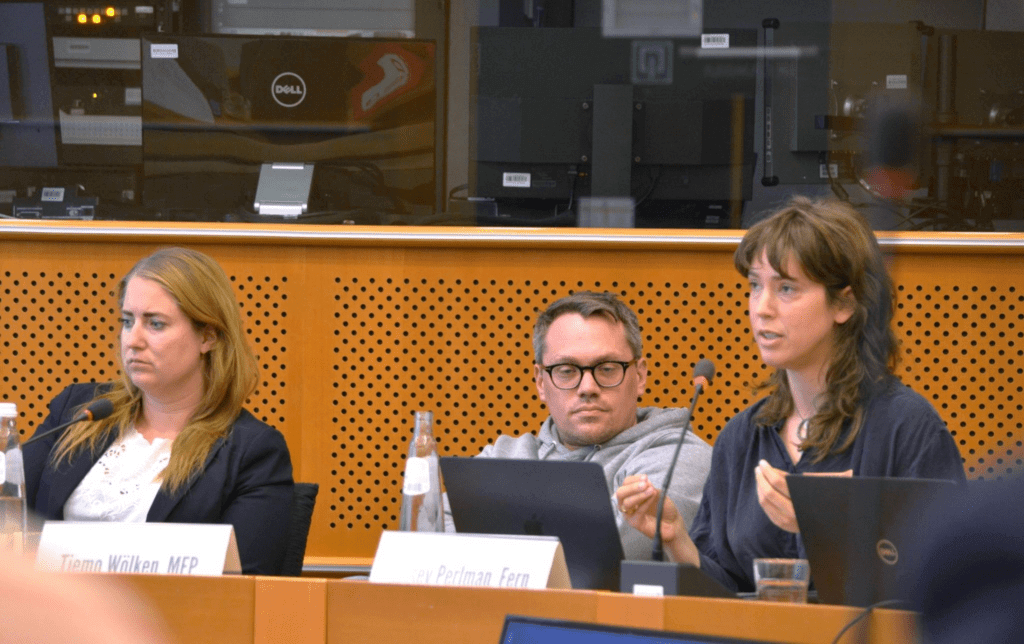Carbon removals can only play a minor supporting role to rapid and deep emissions reductions, concluded a panel discussion organised by Carbon Market Watch at the European Parliament.

On 30 May, Carbon Market Watch organised an event at the European Parliament on the role of carbon dioxide removals and implications for the Carbon Removal Certification Framework (CRCF) – the legislative proposal put forward by the European Commission in November last year outlining the first basic building block to certify, monitor and account for removals in the EU. The event was hosted by MEPs Emma Wiesner (Renew) and Tiemo Wölken (S&D), both shadow rapporteurs on the CRCF in the parliament’s ENVI Committee.
As both the European Parliament and the Council of the European Union are preparing their positions on the file, the discussion examined the opportunities and shortcomings of the suggested certification framework in the context of reaching the EU’s climate targets. Getting the CRCF wrong could endanger the EU actually reaching its 2050 climate neutrality target and taking a leading role in delivering effective climate and environmental policy.
Political hot potato
With the high turnout of over 180 participants, both in person and online, it was clear that carbon removals is quickly moving from a technical topic to a sizzling political hot potato.
Three experts gave their insights into key contested aspects of the CRCF. Nils Meyer-Ohlendorf, senior fellow at and head of the International and European Governance programme at the research institute Ecologic, kicked off the debate with a presentation on the role of removals and possible eligible uses of the certified removals “units”. The Commission is irresponsibly opening the door to all potential uses, he pointed out. “The EU must not build its climate policy on sand,” Meyer-Ohlendorf said. “The EU needs to clarify the strategic role of removals now.”
Meyer-Ohlendorf suggested explicitly ruling out the use of removals to offset emissions in any voluntary or compliance mechanism and keeping removals and reductions separate. Such an idea was strongly supported by MEP Wölken, who stressed the need to take a decision on what the certificates can and should be used for, and include that in the proposal.
Permanent firewall

Danny Cullenward, climate economist, lawyer and vice chair of California’s cap-and-trade advisory committee, informed the group about the risks of equating permanent and temporary removals methods. He stated that, as emitted carbon stays in the atmosphere for centuries, sometimes longer, removed carbon must be stored permanently to keep the climate goals of the Paris Agreement within reach.
To support the Paris Agreement, carbon storage needs to last beyond the point when temperature stabilisation is reached – this would happen approximately when net-zero emissions were reached. Paris-aligned climate mitigation scenarios do not envision net-zero emissions until well after 2050.
Both hosts MEPs agreed that it would be a problem to juxtapose high-quality, permanent removals with temporary storage of carbon and Emma Wiesner suggested that a firewall between the two is needed. This would mean figuring out a pragmatic approach for land-based storage which cannot ensure long-term permanence.
Championing the land

Kelsey Perlman from the forest NGO Fern, third and last speaker at the event, built upon this idea of a firewall to keep carbon farming activities in the CRCF while granting them a different role. “Forests are champions at removing and storing carbon, but only if they are resilient,” she explained. “For forests to be resilient, we must support the people taking action on the ground, not get distracted by complex and ineffective offset schemes.”
Perlman argued that nature-based activities should be included in the framework through activity-based schemes because crediting or result-based approaches have simply not worked for land managers and the climate so far. This would entail promoting positive environmental action by farmers, foresters and other land managers, with nature restoration and resilience to be key requirements.
Both MEPs supported the suggestion to apply an activity-based rather than a result-based approach to land-based practices.
Climate cornerstones
While the debate on the technical details was lively, both the experts and the host MEPs agreed on key pillars: the clear separation between removals and emission reductions is needed to prevent the misuse of certificates and an end to equating permanent removals with the temporary storage of carbon. “Fast, deep and sustained emissions reductions must remain the focus and priority of EU climate action [otherwise] we risk overhyping #removals – they cannot solve everything,” concluded Wijnand Stoefs, CMW’s lead expert on carbon removals.
It is now up to MEPs and EU member states to ensure that these core principles are integrated into the text.
The debate made clear once again how critical it is to focus on high-quality, sustainable and permanent removals that cause no climate, environmental or social harm if we wish to achieve the Paris Agreement goal of limiting global heating to 1.5°C and bequeath a just legacy to future generations. But we should be mindful of the fact that removals of this kind will remain a limited resource. They should be used carefully, only where needed and in a fashion that is suitable for the climate, ecosystems and society.
With additional reporting by Fabiola De Simone.






